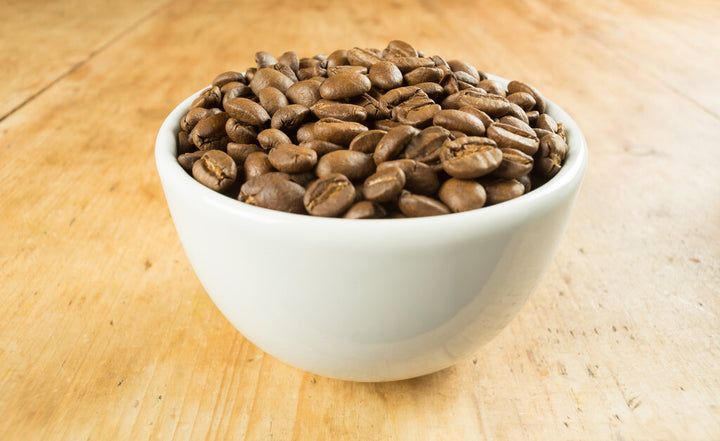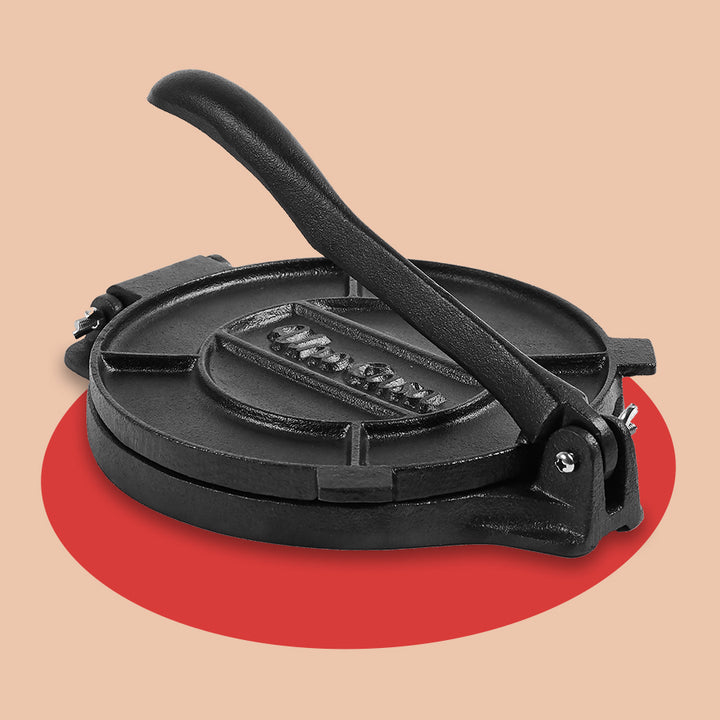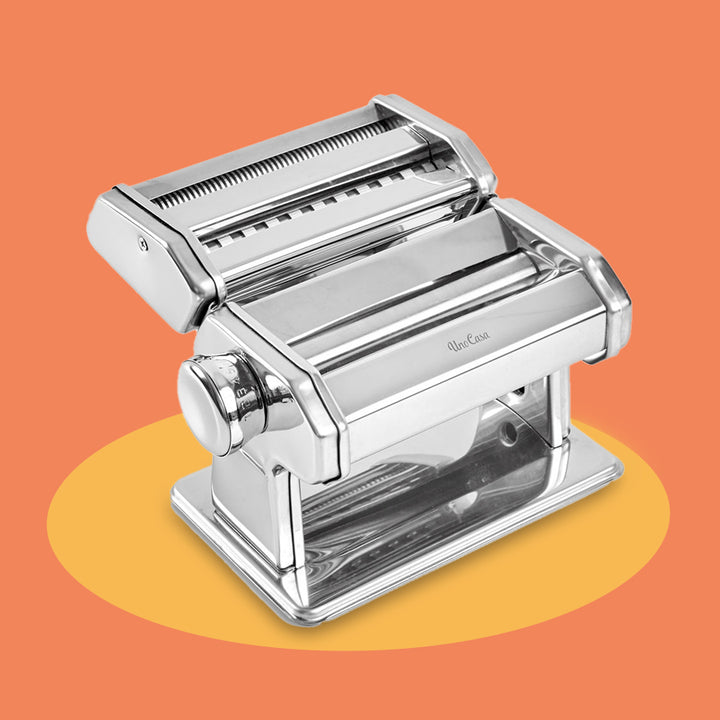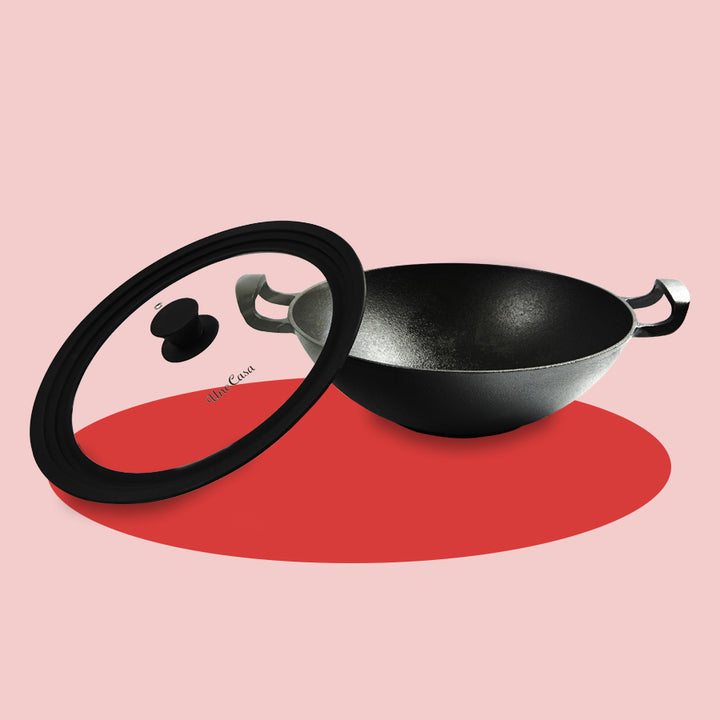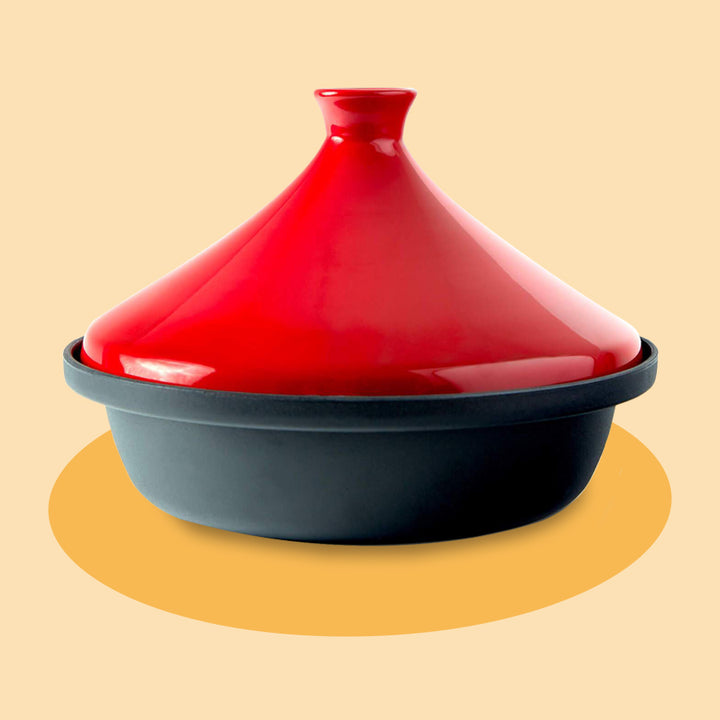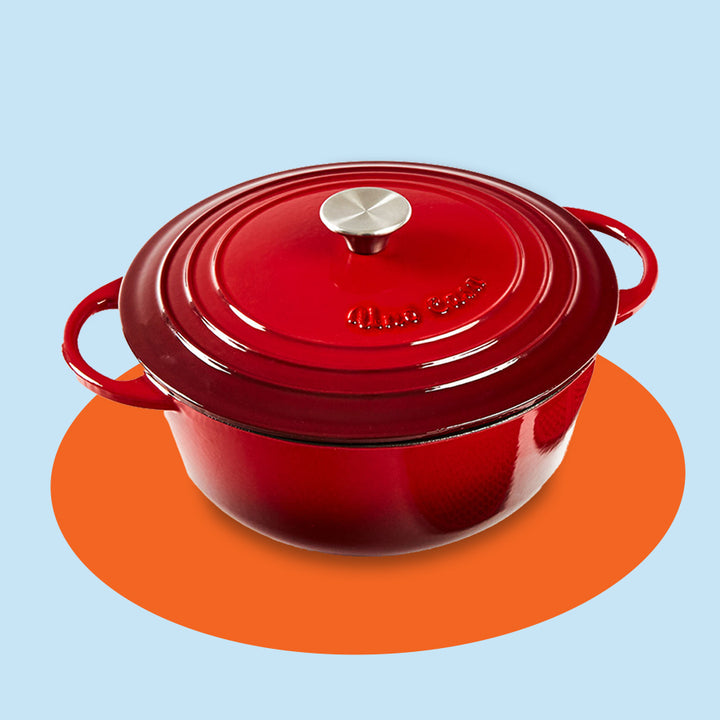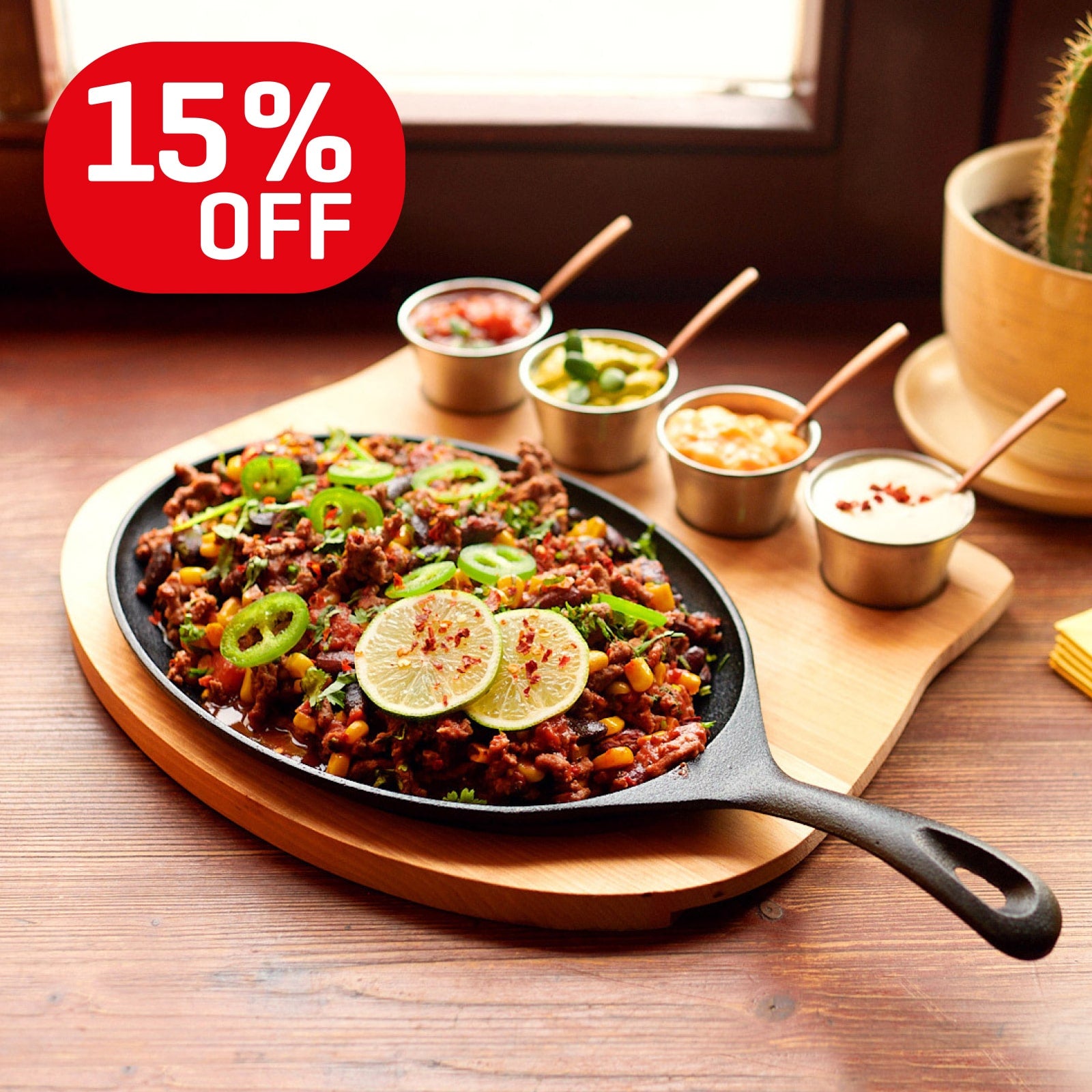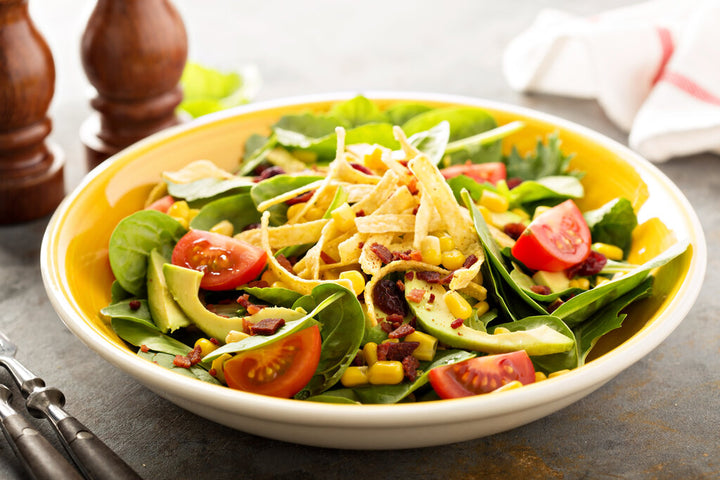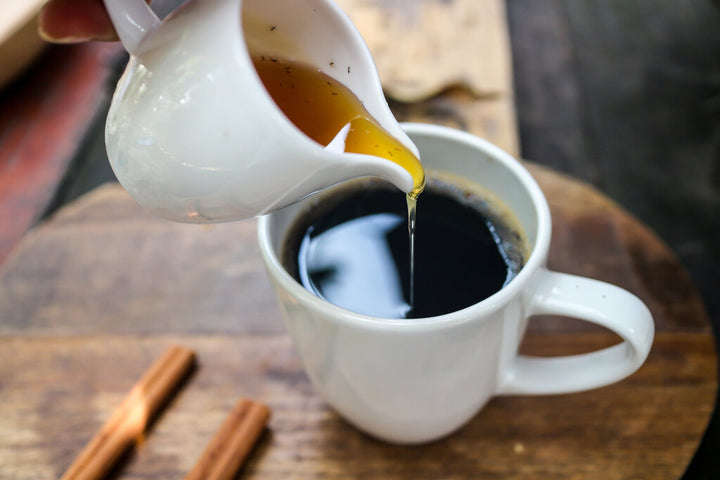Carbon Steel Vs Cast Iron Skillets

When shopping for cookware it can be overwhelming to walk down the kitchen aisle and see the vast expanse of pots and pans in endless color choices, shapes, sizes, materials, and brand names. Your friends all seem to have a different suggestion for which tool they think you simply can't live without. But how can you tell which one will be the right choice for you? And when it comes to carbon steel vs cast iron, which is best?
One of the most important factors in picking a pan is the choice of material; Teflon coated vs. stainless steel vs. cast iron vs. carbon steel.
Teflon is full of toxic chemicals.
Stainless steel doesn't have good heat transfer or distribution.
Cast iron and carbon steel cookware are by far the most durable. They share some great qualities, and both have different advantages and disadvantages.
But in a battle between carbon steel and cast iron, we think that cast iron is the best choice. Let's take a closer look at the two so we can show you why and help make your choice a little more informed.
What is cast iron?
Cast iron is made up of groups of iron-carbon alloys. The carbon content has to be greater than 2% to be considered cast iron. The carbon is what gives cast iron a rough, bumpy feel. It heats up and cools down quite slowly, but once it's hot, it retains its heat for a long time.
What is carbon steel?
This is also an alloy made of carbon and iron, but it has less than 2% carbon. That's why it's considered to be steel. It has a matte finish and is very, very hard. It's also more expensive than cast iron.
Difference between carbon steel and cast iron
A cast-iron pan and its carbon steel counterpart are different in many ways. They will differ in durability, heat conduction, price, weight, versatility and maintenance. In this article we explore why your best option is the cast iron pan.
Durability
Neither cast iron nor carbon steel pans are fully made of iron, but an iron alloy. There are slight differences between the two materials. Both are quite durable in nature compared to the other materials available.
- Cast iron is made up of 97-98% iron and 2-3% carbon
- Carbon steel is usually 99% iron and 1% carbon
To be considered true carbon steel, the product must contain less than 2% carbon vs iron. The difference seems small, but it is noticeable when it comes to cooking tools. Because of the extra iron in carbon steel pans, they can be made thinner than cast iron. This might sound advantageous from a weight perspective, but thin carbon steel pans are more prone to warping than a thick cast iron skillet.
Winner: It's a tie. Both materials are durable and long-lasting.
Weight
Speaking of weight, it's a common misconception that carbon steel weighs less than cast iron. Inch for inch, cast iron actually weighs less than carbon steel as it is a less dense material. The iron in the alloy is the heaviest element, and carbon steel contains more iron than cast iron.
The difference in weight comes from the thinness of many carbon pans. Cast iron pans tend to be made thicker, which means they are generally heavier but the difference is minimal.
Winner: Tie. Thick cast iron is slightly heavier to handle, but neither is unmanageable and doesn't require a ton of moving around once you start cooking.
Heat Induction
Cast iron is the clear winner when it comes to heat induction and retention. Cast iron is able to get very hot and retain that heat, which makes it great for searing meats and burgers. It warms up slowly, but it also cools down slowly so it is great for low, slow cooking as well.
Carbon steel can heat up more quickly than cast iron, but isn't as good at retaining heat. This can be problematic, especially when working with electric stoves that have weak and uneven burners.
Winner: Cast Iron.
Cost
Like any other kitchen tool, there is a wide range of quality and price available when it comes to selecting a skillet.
Cast iron, like its name suggests, is made by pouring the steel/carbon mixture into a pre-made cast. Carbon steel pans are made by manually pressing and rolling carbon steel into the shape of the pan, which is a cost-intensive process. The materials in a carbon steel pan are more expensive as well.
You can find good quality cast iron pieces for as low as $20 a pan, while good quality carbon steel pans start at about $60 per piece.
Winner: Cast Iron. At roughly half the price and comparable quality, why pay more for a carbon steel version?
Versatility
Both of these tools are quite versatile overall. You can use carbon steel and cast iron on the stovetop and in the oven.
Cast iron has an advantage when it comes to its shape. Cast iron pans tend to have steeper sides that lend well to cooking foods that need depth, like deep-dish pizza. They are also an ideal choice for cooking that requires a decent amount of liquid or oil, such as deep-fried chicken. Carbon steel pans have sloped sides, which can be more difficult to work with in those types of situations.
Winner: Cast Iron.
Maintenance
When it comes to maintenance, both carbon steel and cast iron are a bit more maintenance than your traditional non-stick coated pans. It's well worth the trade-off when you consider that these chemical coatings can be quite dangerous for your health when they inevitably start to peel and flake into your food.
Carbon steel and cast iron both require seasoning to keep food from sticking. Seasoning cast iron cookware is a simple process when done correctly. Due to the nature of seasoned cookware, you should avoid cooking acidic foods like tomato sauce in both carbon steel and cast iron.
You should use a similar method to clean both cast iron and carbon steel. Neither is dishwasher safe, so hand washing is required. To keep the seasoning intact, neither type should be submerged in water fully and soap use needs to be kept to a minimum.
Both materials are prone to rust when left moist for long periods of time. A thorough drying with a clean towel after washing, followed by a quick re-season with oil is the best way to keep these dishes in top shape for a long time.
Winner: Tie. They both require a little bit of work for long-term payoff.
Final verdict: Cast iron vs steel
Overall Winner: Cast Iron.
While both cast iron and carbon steel pans have some great qualities, cast iron is better than carbon steel in the heat induction, versatility, and cost categories.
You can use cast iron to cook a large variety of dishes and get fantastic cooking results at a lower price point. If you are looking for the most bang for your buck, cast iron will last virtually forever even (and especially) with regular use.
Leave a comment
Comments will be approved before showing up.
Also in Tips
